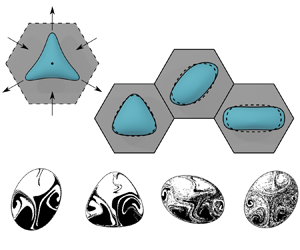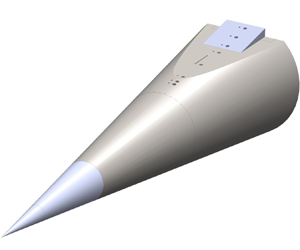Refine listing
Actions for selected content:
1416829 results in Open Access
Resilience as a ‘concept at work’ in the war in Ukraine: Exploring its international and domestic significance
-
- Journal:
- Review of International Studies / Volume 50 / Issue 4 / July 2024
- Published online by Cambridge University Press:
- 22 April 2024, pp. 720-740
- Print publication:
- July 2024
-
- Article
-
- You have access
- Open access
- HTML
- Export citation
ON GENERALISED LEGENDRE MATRICES INVOLVING ROOTS OF UNITY OVER FINITE FIELDS
- Part of
-
- Journal:
- Bulletin of the Australian Mathematical Society / Volume 110 / Issue 2 / October 2024
- Published online by Cambridge University Press:
- 22 April 2024, pp. 199-210
- Print publication:
- October 2024
-
- Article
- Export citation
Developing an accurately sized tonsil tie simulator: a prospective, observational study to measure the anatomical distance from the incisor teeth to the inferior tonsillar pole in a paediatric population
-
- Journal:
- The Journal of Laryngology & Otology / Volume 138 / Issue 10 / October 2024
- Published online by Cambridge University Press:
- 22 April 2024, pp. 1004-1007
- Print publication:
- October 2024
-
- Article
- Export citation
Behaviour of the minimum degree throughout the
 ${\textit{d}}$-process
${\textit{d}}$-process
- Part of
-
- Journal:
- Combinatorics, Probability and Computing / Volume 33 / Issue 5 / September 2024
- Published online by Cambridge University Press:
- 22 April 2024, pp. 564-582
-
- Article
-
- You have access
- Open access
- HTML
- Export citation
Populist Attitudes among Teenagers: How Negative Relationships with Socialization Agents Are Linked to Populist Attitudes
-
- Journal:
- Perspectives on Politics / Volume 22 / Issue 4 / December 2024
- Published online by Cambridge University Press:
- 22 April 2024, pp. 1140-1156
- Print publication:
- December 2024
-
- Article
-
- You have access
- Open access
- HTML
- Export citation
THIBAULT LE TEXIER, LA MAIN VISIBLE DES MARCHÉS: UNE HISTOIRE CRITIQUE DU MARKETING (PARIS: ÉDITIONS LA DÉCOUVERTE, 2022), PP. 656, €26 (PAPERBACK). ISBN: 9782707299249 – RETRACTION
-
- Journal:
- Journal of the History of Economic Thought / Volume 46 / Issue 2 / June 2024
- Published online by Cambridge University Press:
- 22 April 2024, p. 335
- Print publication:
- June 2024
-
- Article
-
- You have access
- HTML
- Export citation
Protecting Your Friends: The Role of Connections in Division Manager Careers
-
- Journal:
- Journal of Financial and Quantitative Analysis / Volume 60 / Issue 4 / June 2025
- Published online by Cambridge University Press:
- 22 April 2024, pp. 2026-2059
- Print publication:
- June 2025
-
- Article
-
- You have access
- Open access
- Export citation
John E. Fahey Przemyśl, Poland: A Multiethnic City During and After a Fortress, 1867–1939 West Lafayette: Purdue University Press, 2023. Pp. 210.
-
- Journal:
- Austrian History Yearbook / Volume 56 / May 2025
- Published online by Cambridge University Press:
- 22 April 2024, pp. 243-244
- Print publication:
- May 2025
-
- Article
- Export citation
EXPONENTIAL ASYMPTOTICS USING NUMERICAL RATIONAL APPROXIMATION IN LINEAR DIFFERENTIAL EQUATIONS
- Part of
-
- Journal:
- The ANZIAM Journal / Volume 65 / Issue 4 / October 2023
- Published online by Cambridge University Press:
- 22 April 2024, pp. 285-307
-
- Article
-
- You have access
- Open access
- HTML
- Export citation
Dynamics and active mixing of a droplet in a Stokes trap
-
- Journal:
- Journal of Fluid Mechanics / Volume 985 / 25 April 2024
- Published online by Cambridge University Press:
- 22 April 2024, A15
-
- Article
-
- You have access
- Open access
- HTML
- Export citation
Addressing the Mental Health Needs of Children Affected in the Morocco Earthquake – CORRIGENDUM
-
- Journal:
- Disaster Medicine and Public Health Preparedness / Volume 18 / 2024
- Published online by Cambridge University Press:
- 22 April 2024, e75
-
- Article
-
- You have access
- HTML
- Export citation
Evagrius of Pontus, The Gnostic Trilogy, Translated and Annotated by Robin Darling Young, Joel Kalvesmaki, Columba Stewart, Charles Stang and Luke Dysinger, Oxford University Press, New York, 2024. Hbk.pp.528. £78.00. ISBN 9780199997671
-
- Journal:
- Journal of Anglican Studies / Volume 23 / Issue 1 / May 2025
- Published online by Cambridge University Press:
- 22 April 2024, pp. 260-263
-
- Article
- Export citation
Successful ablation of premature ventricular contractions originating from the posterior-superior process of the left ventricle approaching from the right atrium in a 13-year-old male
-
- Journal:
- Cardiology in the Young / Volume 34 / Issue 6 / June 2024
- Published online by Cambridge University Press:
- 22 April 2024, pp. 1378-1380
-
- Article
- Export citation
Simplicial volume of manifolds with amenable fundamental group at infinity
- Part of
-
- Journal:
- Glasgow Mathematical Journal / Volume 66 / Issue 3 / September 2024
- Published online by Cambridge University Press:
- 22 April 2024, pp. 563-570
- Print publication:
- September 2024
-
- Article
-
- You have access
- Open access
- HTML
- Export citation
Nutritional vulnerability of early zoeal stages of the ornamental shrimp Lysmata ankeri (Decapoda: Caridea)
-
- Journal:
- Journal of the Marine Biological Association of the United Kingdom / Volume 104 / 2024
- Published online by Cambridge University Press:
- 22 April 2024, e45
-
- Article
- Export citation
A much-needed focus on self-harm in older adults: Commentary on “Hospital-presenting self-harm amongst older adults living in Ireland: 13-year trend analysis from the National Self-Harm Registry Ireland” by Troya et al.
-
- Journal:
- International Psychogeriatrics / Volume 36 / Issue 5 / May 2024
- Published online by Cambridge University Press:
- 22 April 2024, pp. 332-335
-
- Article
- Export citation
Relaminarization effects in hypersonic flow on a three-dimensional expansion–compression geometry
-
- Journal:
- Journal of Fluid Mechanics / Volume 985 / 25 April 2024
- Published online by Cambridge University Press:
- 22 April 2024, A25
-
- Article
- Export citation
Clara & Robert Schumann: Piano Concertos Beatrice Rana, pianoChamber Orchestra of EuropeYannick Nézet-Séguin, conductorWarner Classics, 5419729625, 2023(1 CD: 57 minutes) £12.75
-
- Journal:
- Nineteenth-Century Music Review / Volume 21 / Issue 3 / December 2024
- Published online by Cambridge University Press:
- 22 April 2024, pp. 588-591
-
- Article
- Export citation
Rebecca Tapscott. Arbitrary States: Social Control and Modern Authoritarianism in Museveni’s Uganda. Oxford: Oxford University Press, 2021. 256 pp. $100. Cloth. ISBN: 9780198856474.
-
- Journal:
- African Studies Review / Volume 67 / Issue 3 / September 2024
- Published online by Cambridge University Press:
- 22 April 2024, pp. 770-771
-
- Article
-
- You have access
- HTML
- Export citation
The effects of distributed practice on second language fluency development
-
- Journal:
- Studies in Second Language Acquisition / Volume 46 / Issue 3 / July 2024
- Published online by Cambridge University Press:
- 22 April 2024, pp. 770-794
- Print publication:
- July 2024
-
- Article
-
- You have access
- Open access
- HTML
- Export citation



































